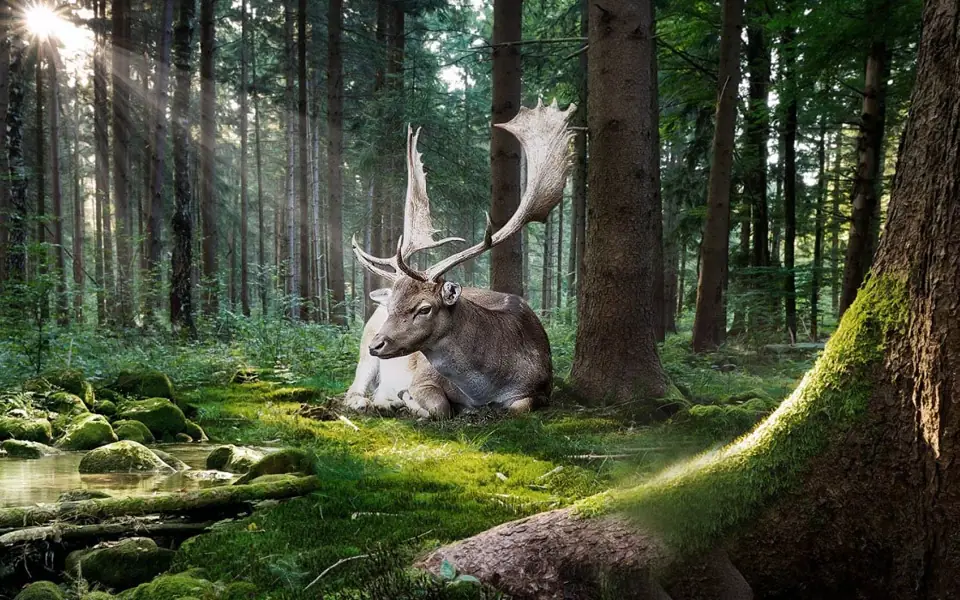Table of Contents
The Irish elk is one of the most fascinating and majestic creatures to have ever roamed the Earth. This extinct giant continues to captivate our imagination with its enormous antlers and enigmatic presence in the fossil record. In this article, we will dive deep into the history, physical characteristics, behavior, and cultural significance of the Irish elk, exploring why this prehistoric marvel still holds a special place in the hearts of nature enthusiasts and researchers alike.
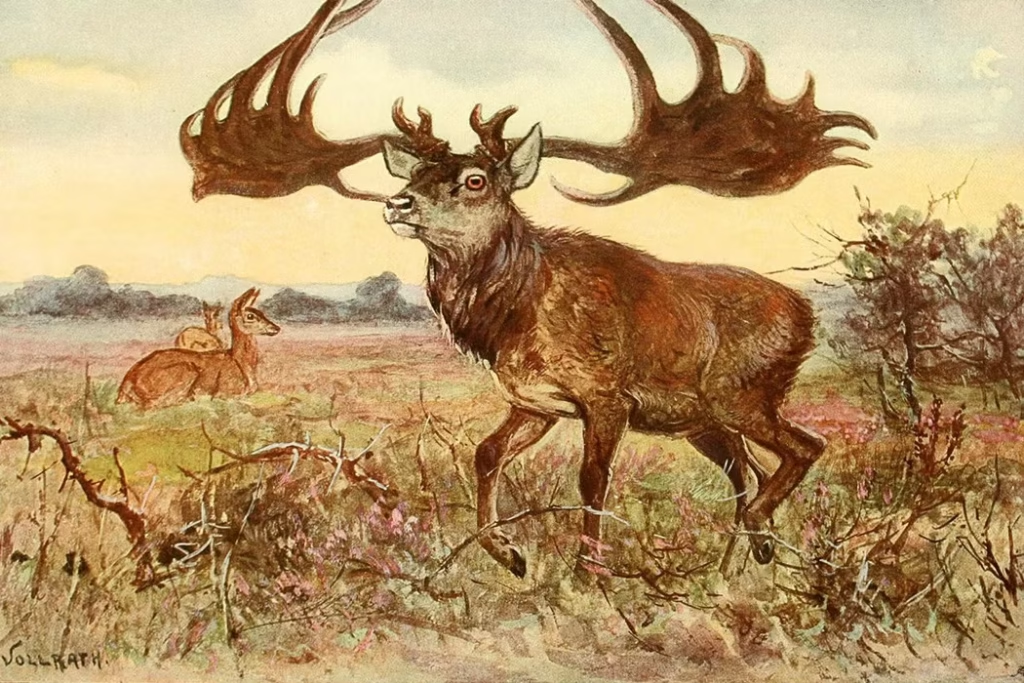
A Glimpse into the Past: History and Discovery
The Irish elk, despite its name, was not exclusive to Ireland. These remarkable creatures once roamed across vast regions of Europe and Asia during the late Pleistocene and early Holocene epochs. Fossils and artistic depictions reveal that the Irish elk was not only widespread but also one of the largest deer species to have ever existed. Paleontologists estimate that these giants stood over 2 meters tall at the shoulder and boasted antlers that could span up to 3.5 meters.
The discovery of Irish elk remains has provided significant insight into prehistoric ecosystems. As scientists unearthed their bones and antlers, they began to piece together a picture of a world where these magnificent animals thrived in dense forests and open meadows alike. Their sudden disappearance remains a subject of much debate, and many researchers have drawn parallels with other extinct species—check out our post on 7 Animals That Have Gone Extinct in the Last Century for more details on extinction phenomena.
Despite their imposing size, the Irish elk had to contend with the challenges of a changing climate and evolving landscapes. Their history is a testament to nature’s dynamic balance and the complex interplay between species, habitat, and environmental pressures.
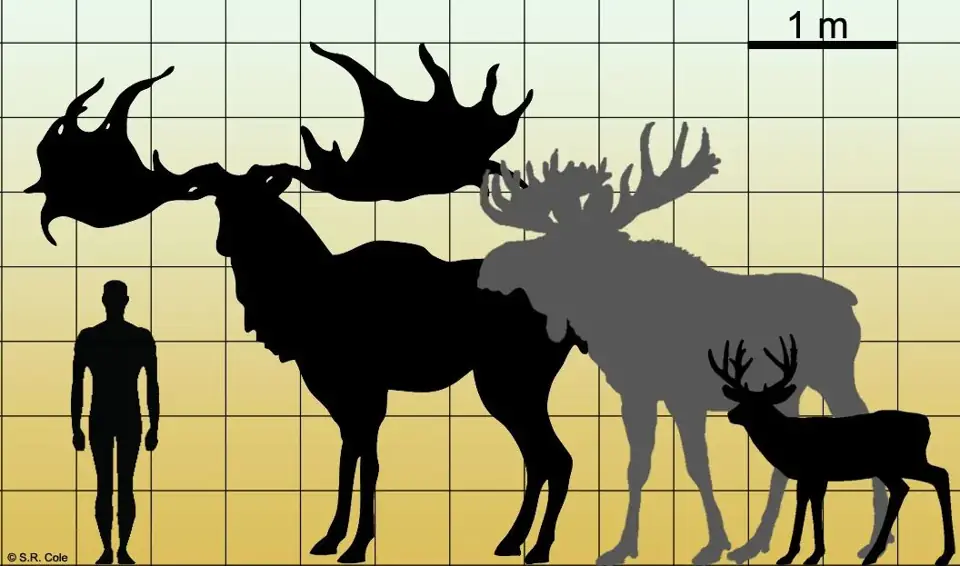
Remarkable Physical Characteristics
One of the most awe-inspiring features of the Irish elk is its gigantic antlers. These antlers are not only a symbol of strength but also an excellent example of nature’s ingenuity. With spans that could reach an astounding 3.5 meters, the antlers of the Irish elk were likely used to impress rivals during mating displays and to establish dominance within their herds.
The Antler Phenomenon
The evolution of such enormous antlers has intrigued scientists for decades. Some theories suggest that the antlers served as a visual display of genetic fitness, while others propose that they might have helped regulate body temperature or deter predators. For a deeper look at how nature develops extraordinary defense and display mechanisms, see our article on Animal Weapons: 6 Incredible Mechanisms.
In addition to their impressive antlers, the Irish elk had a robust body structure adapted for survival in a variety of terrains. Their long legs allowed them to navigate the mixed woodlands and open grasslands of prehistoric Europe, while their sturdy build enabled them to support the weight and breadth of their antlers. Although the Irish elk is extinct, its remains continue to provide a window into the evolutionary strategies of large mammals.

Behavior, Ecology, and Habitat
The ecological role of the Irish elk remains a fascinating topic for researchers. Living in diverse environments—from forested regions to open plains—they were likely adaptable creatures with complex social structures. Fossil evidence suggests that these animals may have lived in herds, which would have been advantageous for protection against predators and for raising their young.
Daily Life in Prehistoric Ecosystems
Much like modern-day deer, the Irish elk would have spent a significant portion of its day grazing on a variety of vegetation. Their diet probably included leaves, grasses, and possibly even bark from trees, indicating that they were well-adapted to seasonal changes in food availability. This adaptability allowed them to flourish in regions with varying climates and landscapes.
Moreover, it is believed that the Irish elk might have undertaken seasonal migrations in search of more abundant resources. This behavior is reminiscent of other migratory species today. For more on the navigational wonders and migratory behaviors of animals, check out our insights in Animal Navigation: Fascinating Wonders of Instinctual Guidance.
The Irish elk not only played a significant role as a herbivore in its ecosystem but also influenced the structure of its habitat. The grazing habits of such large animals could have shaped vegetation patterns and contributed to the overall biodiversity of the regions they inhabited. Their presence is a reminder of the interconnectedness of all life forms—past and present.
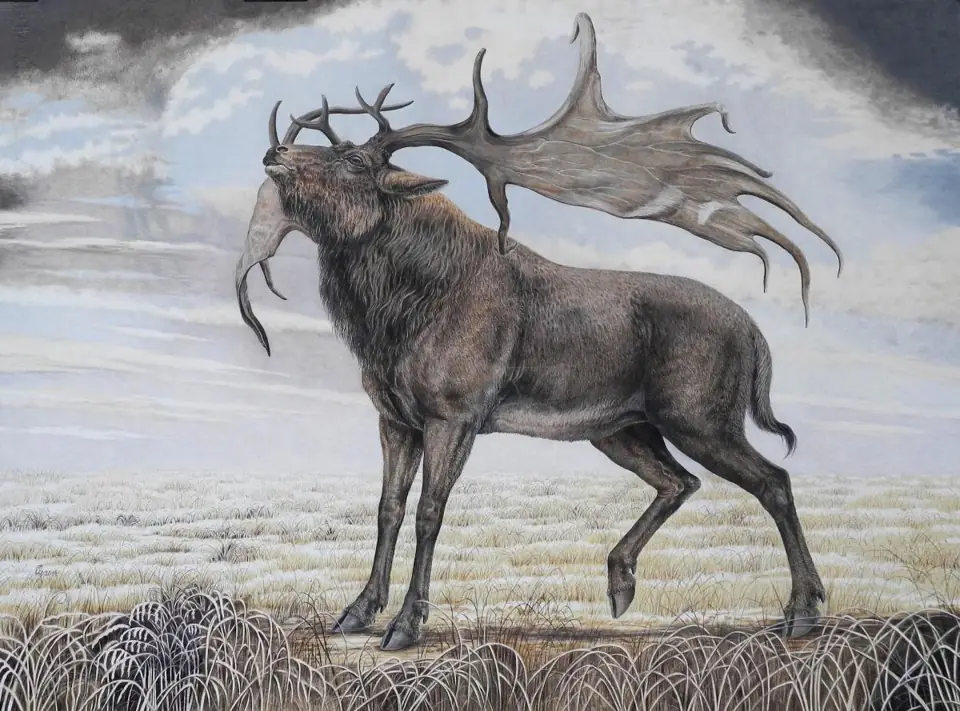
Theories Behind Their Extinction
Despite their success as a species, the Irish elk eventually vanished from the fossil record. Several theories have been proposed to explain this extinction, and researchers continue to debate the contributing factors. Some of the leading hypotheses include:
Climate Change and Habitat Loss
One of the most compelling explanations for the disappearance of the Irish elk is climate change. As the Ice Age came to an end, dramatic shifts in temperature and vegetation led to the fragmentation of their habitat. The loss of dense forests and the alteration of grassland ecosystems meant that these giant creatures faced a drastically different environment than the one to which they were adapted.
Human Impact
Another theory points to the increasing presence of humans in Europe and Asia during the time the Irish elk roamed. Early human hunters may have contributed to their decline by overhunting or by indirectly affecting their food sources. The pressures of human encroachment, combined with environmental changes, likely created a perfect storm that led to their eventual extinction.
For those interested in exploring how other ancient creatures have fared in the face of changing environments, our article on Living Dinosaurs: 10 Dinosaurs That Still Exist Today provides an interesting contrast between species that vanished and those that continue to thrive.
While the exact cause of the Irish elk’s extinction remains a subject of ongoing research, the lessons learned from their demise continue to inform modern conservation efforts. Their story serves as a potent reminder of the fragility of even the most dominant species in the face of rapid environmental change.
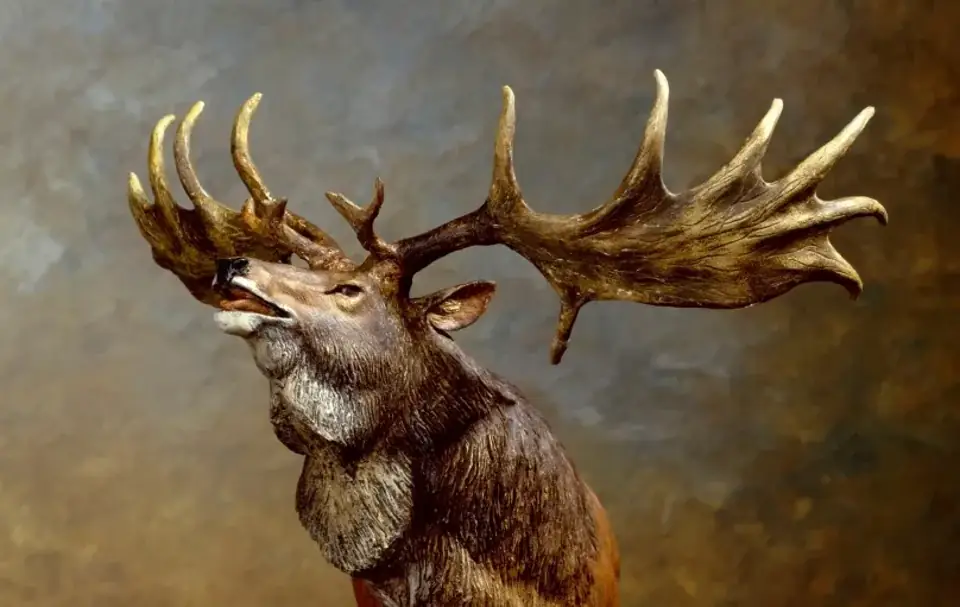
Cultural Significance and Legacy
Even though the Irish elk disappeared thousands of years ago, its legacy lives on in art, literature, and popular culture. The enormous antlers of the Irish elk have become a symbol of nature’s grandeur and mystery. Artists and storytellers have long been inspired by these magnificent creatures, often portraying them as regal beings that once ruled the ancient woodlands.
Symbolism and Modern Interpretations
In various mythologies and folklore, the image of a giant deer with sprawling antlers is associated with wisdom, strength, and the magic of the natural world. These interpretations resonate with modern audiences, sparking curiosity about the natural history of our planet. Just as the Narwhals: The Unicorns of the Sea capture our imagination with their mystical appearance, the Irish elk continues to evoke wonder and admiration.
Today, the study of the Irish elk is not merely an academic pursuit—it is a bridge connecting us to a time when the Earth was a wild and untamed place. By understanding the factors that led to the rise and fall of such species, we gain valuable insights into current biodiversity challenges and the importance of conservation.
Furthermore, the story of the Irish elk encourages us to look more closely at our surroundings and appreciate the intricate relationships that sustain life. Whether it’s through the lens of paleontology or the realm of cultural expression, the legacy of the Irish elk reminds us of nature’s enduring power and the ongoing need to protect it.

Conclusion
The Irish elk remains one of the most iconic symbols of prehistoric wildlife. Its towering antlers, massive stature, and eventual disappearance offer a compelling narrative about the challenges of survival in a changing world. From the fossilized remains that continue to puzzle scientists to the cultural imagery that keeps its memory alive, the Irish elk teaches us valuable lessons about evolution, adaptation, and the impermanence of even the mightiest of species.
In exploring the history, physical characteristics, ecological role, and extinction theories surrounding the Irish elk, we not only uncover the mysteries of a bygone era but also gain a deeper appreciation for the dynamic tapestry of life on Earth. For additional perspectives on extinction and the resilience of nature, be sure to visit our posts like 7 Animals That Have Gone Extinct in the Last Century and Living Dinosaurs: 10 Dinosaurs That Still Exist Today.
The legacy of the Irish elk continues to inspire and educate, urging us to reflect on the delicate balance that governs life. As we look to the future, let the story of these prehistoric giants serve as a powerful reminder of our responsibility to cherish and conserve the natural world for generations to come.
F. A. Q. about Irish Elk
What exactly was the Irish elk?
The Irish elk was one of the largest deer species that ever existed, known for its gigantic antlers and impressive size. Despite its name, it was not exclusive to Ireland but roamed across Europe and parts of Asia.
When did the Irish elk live?
The Irish elk roamed the Earth during the late Pleistocene to early Holocene epochs. Their presence in the fossil record indicates that they thrived during the last Ice Age before disappearing due to a combination of environmental changes and human impacts.
How large were the Irish elk, and what made them so unique?
These prehistoric giants could stand over 2 meters tall at the shoulder, and their antlers could span up to 3.5 meters, making them one of the most imposing deer species. Their antlers likely served as both a display of dominance and a means of defense.
Why did the Irish elk go extinct?
While the exact reasons remain debated, the leading theories suggest that rapid climate change, resulting habitat loss, and increasing human activities played significant roles in the extinction of the Irish elk.
How does the study of the Irish elk benefit modern science?
Research into the Irish elk’s history and biology helps scientists understand the dynamics of species evolution, adaptation, and extinction. These insights are invaluable for current conservation efforts and for understanding the impacts of climate change on modern wildlife.
Where can I learn more about similar extinct species?
For further reading on extinction events and comparisons with other ancient creatures, explore our posts on 7 Animals That Have Gone Extinct in the Last Century and Living Dinosaurs: 10 Dinosaurs That Still Exist Today.
The legacy of the Irish elk endures through both scientific discovery and cultural imagination. By exploring its fascinating story, we are reminded of nature’s splendor and the ever-present need to safeguard our planet’s biodiversity.


